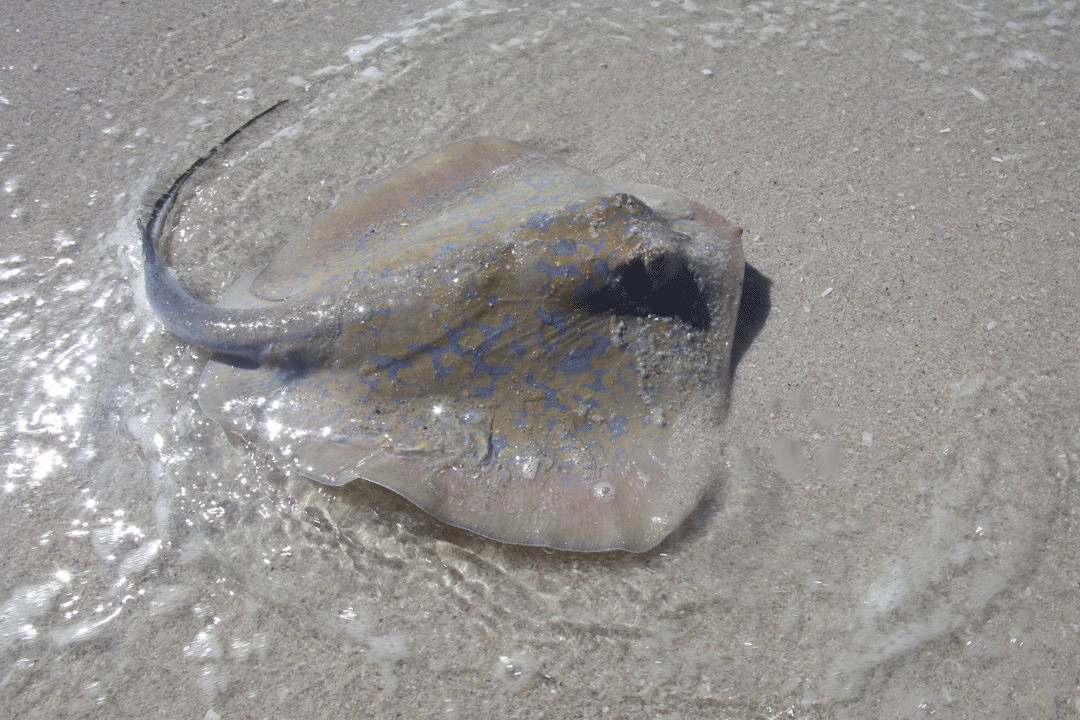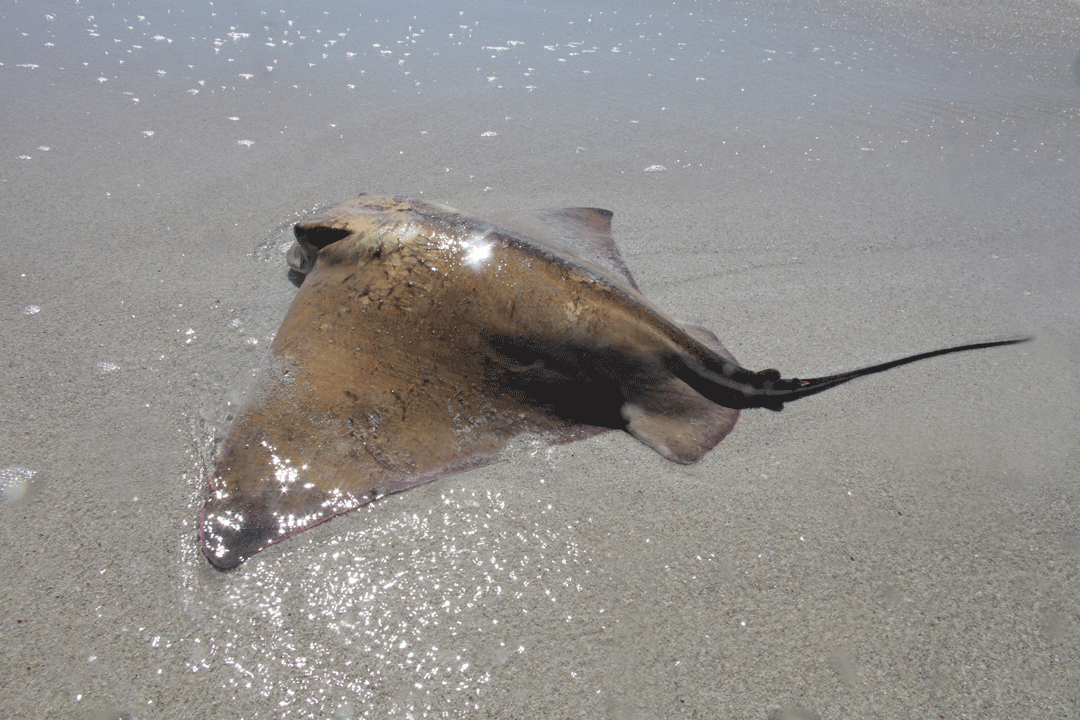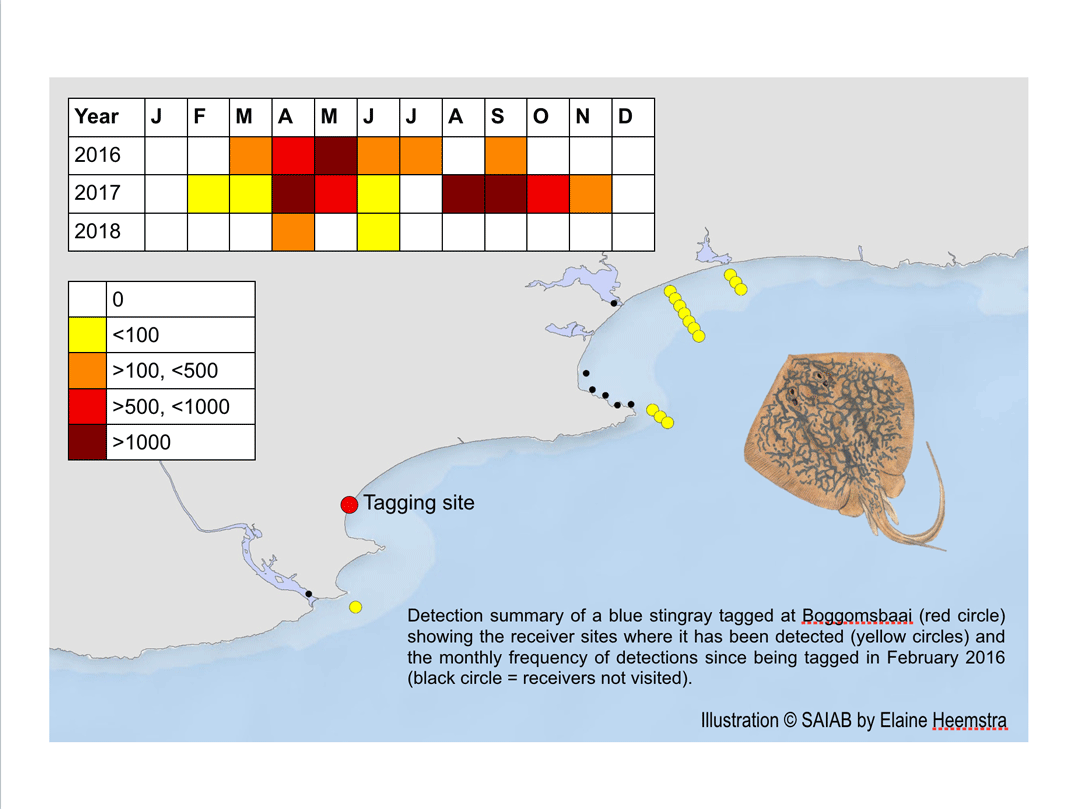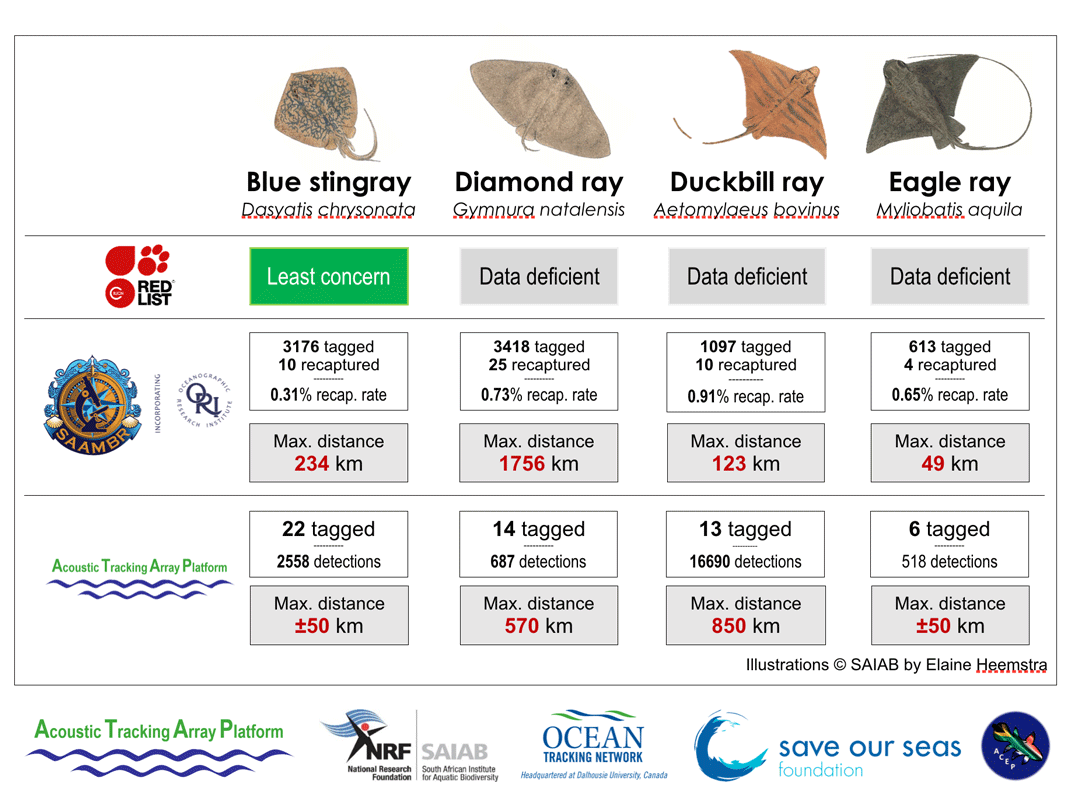The stingray tales
Chondrichthyans, including rays, evolved at least 420 million years ago. Despite them being one of the most speciose lineages of predators on the planet, overfishing and habitat degradation have profoundly altered populations of many species. The relative extinction risk of this group was assessed using the Red List Categories and Criteria of the International Union for the Conservation of Nature (IUCN). Overall, it was estimated that 25% of chondrichthyans are threatened worldwide, and more concerning is that almost half (46.8%) are considered to be Data Deficient, meaning that information on these species is insufficient to assess their status (Dulvy et al. 2014).

Blue stingray. Photo © Alessandro De Maddalena | Shutterstock
A group of ATAP researchers initiated a stingray-tagging project aimed at improving our understanding of the movement behaviour of these animals, particularly blue stingrays, diamond rays, duckbill rays and eagle rays. According to the IUCN Red List, all are considered to be data deficient, while blue stingrays are considered to be least concern. Conventional dart tagging appears to be an inappropriate method with which to assess the movement behaviour of these animals, mostly because less than 1% of all rays tagged by anglers in the Oceanographic Research Institute’s Cooperative Fish Tagging Project (ORI-CFTP) have been recaptured. This is more than likely due to tag shedding. Enter acoustic telemetry! Internally-equipping stingrays with transmitters not only prevents tag shedding, but also enables animals to be tracked for multiple years by using long-life transmitters.

Eagle ray. Photo © Alessandro De Maddalena | Shutterstock
To date, 55 stingrays have been acoustically tagged – 22 blue stingrays, 14 diamond rays, 13 duckbill rays and 6 eagle rays. Some individuals are already moving further than has ever been recorded! For example, the maximum distance travelled according to the ORI-CFTP for a duckbill ray is 123 km. However, a duckbill ray acoustically tagged on 18 October 2016 at Cape Infanta near the mouth of the Breede Estuary (Western Cape), was recorded moving all the way to Kei Mouth (Eastern Cape) approximately 850 km away – seven times further than previously recorded! This particular animal, being detected 1373 times, initially spent approximately three months in the Cape Infanta area, before disappearing from the array and reappearing in Mossel Bay (± 140 km eastwards) on 02 May 2017. Four days later, it was detected in Plettenberg Bay (a further ± 130 km eastwards), moving at an average speed of 1.35 km/h. It continued moving eastwards, passing Port Alfred on 31 May 2017 before reaching Kei Mouth on 09 June 2017. It then turned around and headed westwards, being detected in Algoa Bay on 25 July 2017, in Plettenberg Bay where it spent most of August 2017, in Mossel Bay on 05 September 2017, and finally back to Cape Infanta where it appeared to spend most of the summer 2017/18 (between 13 September 2017 and 24 February 2018). It was last detected on 05 May 2018 in Mossel Bay. A-ray-zing or what?

In contrast to this highly mobile animal, a blue stingray tagged in Boggomsbaai, Vleesbaai (Western Cape) on 26 February 2016 has revealed extreme resident behaviour. To date, it has been detected 2491 times, mostly on receivers in Mossel Bay. It was first detected in Mossel Bay on 19 March 2016, and was detected here periodically for six months before going undetected from 19 September 2016 until 21 February 2017. It was once again detected in Mossel Bay for almost nine months, before disappearing from the array on 07 November 2017. It reappeared off the Gouritz Estuary mouth on 01 April 2018 and moved back into Mossel Bay, where it was last detected on 22 June 2018.

This exciting project has already revealed new insights into the movement behaviour of data-deficient stingray species. The research team aim to tag more stingrays over the upcoming summer season.
